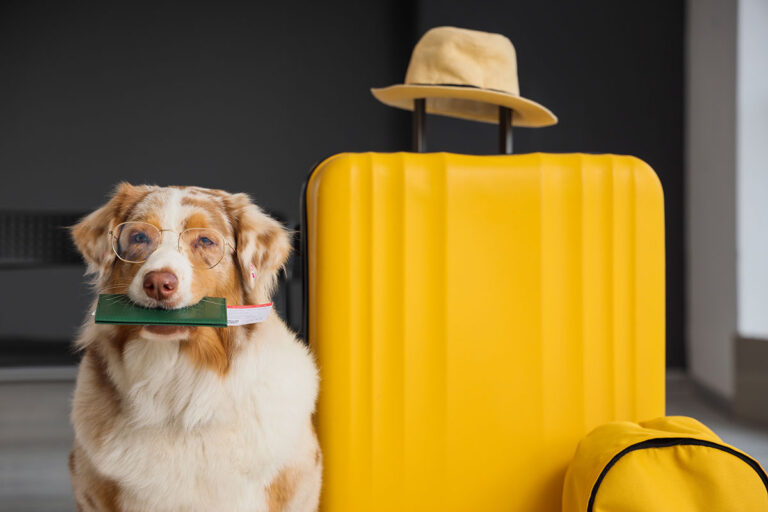The global pet travel services market is projected to surge from US$2.6 billion currently to US$5.3 billion by 2034, and Dubai-based Fly JetPets is positioning itself at the forefront of this 8.3 per cent compound annual growth rate with CEO Gunawan Wahab reporting stronger inbound than outbound traffic as the city continues attracting relocating families.
In recent times, Dubai has seen a surge in the number of high-net-worth and ultra-high-net-worth individuals and families relocating to the city.
“We have more people who want to fly into Dubai compared to people who want to fly out of Dubai,” Wahab told Arabian Business in an exclusive interview. “For people who fly out of Dubai, usually they’re traveling for services or holidays. But for people flying into Dubai, most of them are relocating for work.”
Fly JetPets launched in October 2024 at Al Maktoum International Airport in collaboration with Jetex, the global private jet aviation company with Indonesian Ambassador to the UAE Husin Bagis inaugurating the service.
The company offers private charters for clients booking entire aircraft, plus shared charters that group travelers with similar routes and timelines to split costs.
Private jet charters for pets generally range from $10,000 to $15,000 per hour depending on aircraft type, route, season and positioning, Wahab explained. The London-Dubai route, one of the company’s flagship sectors, costs approximately $10,000 for a complete charter.
Shared options run from several thousand dollars per seat up to $13,000 depending on distance and demand.
“Our goal is to make pet-friendly travel as affordable as possible,” said Wahab, himself a pet parent. “We come from that perspective, we have pets and the main concern is that we do not want pets to fly in the cargo hold. We want to fly them in the cabin. But private jets are expensive with high operating costs. I think that’s one of the main challenges we face in terms of pricing.”
Demand follows Dubai’s migration calendar, peaking before summer in April and May, then again from August through October as residents return. December’s holiday season triggers another wave as families depart in the first two weeks and return to the UAE by mid-January.
“Many people fly around the country in the first or second week of December and usually come back to the UAE around the first or second week of January,” he added.
The customer base splits between relocating families and frequent travellers maintaining residences across multiple countries. “We have clients who go back and forth between Dubai and London, for example,” Wahab said.
While core routes connect London, Dubai and key European hubs, the strategic partnership with Jetex enables global operations through an extensive network of private terminals and ground services.
Even though we’re based in Dubai, almost every day we receive inquiries from all over the world, not only to Dubai,” Wahab said. “We have requests from New Zealand to Australia, within the US domestically, from Hong Kong to Dubai and from London to Hong Kong. This shows the industry is indeed growing.”
Beyond pricing, Wahab identified regulatory compliance as the industry’s other defining challenge. Pet travel documentation varies wildly across jurisdictions with no standardised framework, unlike human travel where passports and visas follow relatively uniform protocols.
“For people who want to travel with their pets, one of the biggest nightmares is the pet travel documentation,” he said. “Unlike human travel where you just need a passport and possibly a visa, with pet travel there’s no one-size-fits-all.”
What Wahab described as “one of the biggest nightmares” for pet owners stems from the absence of universal rules. Requirements shift based on origin country, destination, pet breed, species classification, vaccination records and previous international movements.
The UAE prohibits certain dog breeds, including Tibetan Mastiffs and American Bullies, forcing operators to maintain current knowledge of constantly evolving restrictions across dozens of markets.
For shared charters, behavioral screening adds complexity beyond regulatory compliance. The company assesses whether pets are reactive, friendly or playful before determining cabin arrangements. Dogs requiring muzzles get separated from other animals to prevent mid-flight incidents. “We don’t mix all the dogs together,” Wahab said.
Much of this remains manual work. Staff sometimes contact foreign regulatory bodies directly to verify current import requirements, cross-referencing multiple sources to ensure compliance. While Wahab believes standardised international regulation would simplify operations, the current fragmentation creates demand for specialised services that can navigate bureaucracy on behalf of clients.
The business extends well beyond cats and dogs. Prospective clients have requested transport for pigeons and ferrets, among other uncommon species. Wahab positioned the company as species-agnostic, willing to carry any legal, non-endangered animal rather than limiting services to typical household pets.
“We receive many weird requests,” Wahab said.
Asia represents the next growth frontier with connecting Hong Kong and Singapore to Dubai remain largely untapped, according to Wahab, who noted the entire pet-friendly aviation sector is developing. Even the oldest established competitor globally has operated for only two or three years, leaving substantial room for market development across underserved regions.
Market growth projections are attributed to increasing pet humanisation, rising disposable income and higher spending on companion animals.
Allianz Partners USA reports that pets now accompany over 40 per cent of middle-aged travellers and nearly a quarter of senior travellers.
Wahab anticipates pet-friendly offerings will expand beyond private aviation over the next five years. Some commercial airlines already permit small cats in passenger cabins, and he expects hotels, restaurants and cruise lines to increase accommodation for travelling animals.
When asked if commercial aviation’s growing pet-friendliness will threaten the private segment, Wahab said, “there is limitation on commercial airlines” because fundamental constraints remain.
Size and breed restrictions typically limit in-cabin commercial travel to carriers small enough to fit under seats, excluding popular breeds like Golden Retrievers unless classified as support animals. Private charters face no such limitations, even Alaskan Malamutes can fly in the main cabin.
The value proposition extends beyond animal accommodation to the entire travel experience. Private terminals eliminate check-in queues, luxury lounges replace crowded gate and immigration clearance on arrival takes minutes rather than hours. “At the end of the day, people choose experience over just travel,” Wahab said.
The company’s five-year strategy targets route expansion beyond Dubai’s hub, operating intra-Asian flights like Hong Kong to Singapore independent of UAE connections. The challenge lies in maintaining premium service standards while driving costs down enough to broaden the customer base beyond ultra-high-net-worth individuals.
“Our goal is to make back-friendly travel as affordable as possible,” Wahab concluded.








